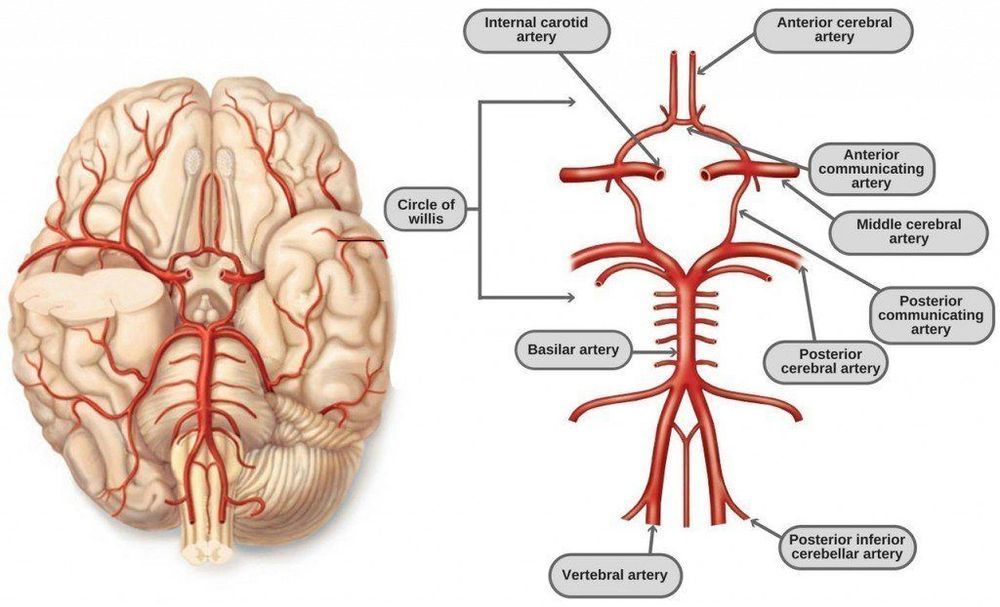Blood flows into the brain primarily via the carotid arteries and the vertebral arteries. The Circle of Willis is a circular arterial structure in the brain that connects blood flowing in from the carotid arteries with blood flowing in from the basilar artery (which is fed by the vertebral arteries). Blood flows from the Circle of Willis into brain tissue via the anterior, middle, and posterior cerebral arteries. Many studies have shown that the Circle of Willis is incomplete in most people. A 1998 study of 150 healthy adult volunteers showed a complete Circle of Willis in only 42% of cases — more often complete in younger persons and females [RADIOLOGY; Krabbe-Hartkamp, MJ; 207:103–111 (1998)]. A slightly more encouraging 2002 study of 118 healthy volunteers in the 65–68 age group, showed 47% had a complete Circle of Willis [THE JOURNAL OF CARDIOVASCULAR SURGERY; Macchi, C; 43:887–890 (2002)]
For cryonics purposes, it has been believed that perfusion into the carotid arteries, but not into the vertebral arteries will result in incomplete perfusion of the brain if the Circle of Willis is not complete. In particular, if both posterior communicating arteries are missing, then perfusing only through the carotid arteries will result in no blood getting to parts of the brain supplied by the posterior cerebral arteries. Both posterior communicating arteries were missing in 11% of those in the 1998 study and in 14% of those in the 2002 study cited above.
Nonetheless, a 2008 study showing Circle of Willis complete in only 40% of 99 patients found no case of insufficient perfusion in functional tests of patients given unilateral cerebral perfusion. The authors concluded that “extracranial collateral circulation” provides an alternative pathway to the Circle of Willis for cerebral crossperfusion [EUROPEAN JOURNAL OF CARDIOTHORACIC SURGERY; Urbanski, PP; 33:402–408 (2008)]. Although persons with missing posterior communicating arteries could easily have pathways to opposite sides of the brain, other variants of Circle of Willis incompleteness would be expected to prevent perfusion across hemispheres.
